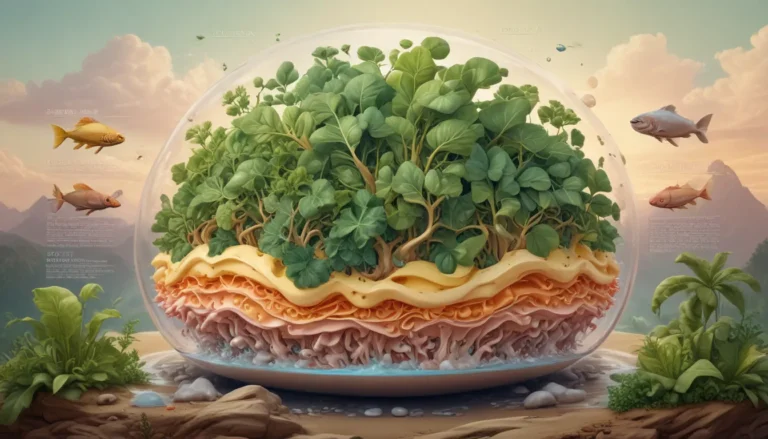A Note About Images: The images used in our articles are for illustration purposes only and may not exactly match the content. They are meant to engage readers, but the text should be relied upon for accurate information.
Curie temperature, named after the renowned physicist Marie Curie, is a captivating concept in the realm of materials science. This critical temperature marks the point at which certain materials undergo a phase transition, leading to remarkable changes in their magnetic or electrical properties. Join us as we explore 15 mind-blowing facts about Curie temperature, shedding light on its historical significance, practical implications, and cutting-edge research in this intriguing field.
Understanding Curie Temperature: A Key Overview
Curie Temperature, also known as Curie Point, signifies the temperature at which specific materials transition from a magnetic state to a non-magnetic state. This term pays homage to Pierre Curie, a distinguished physicist who made significant contributions to the study of magnetism.
The Diversity of Curie Temperature Across Materials
One of the most fascinating aspects of Curie Temperature is its variation among different materials. Each substance possesses unique atomic structures and magnetic properties, resulting in distinct Curie Temperatures. This characteristic makes Curie Temperature a defining feature of each material.
The Interplay Between Magnetic Ordering and Curie Temperature
The Curie Temperature is intricately linked to the type of magnetic ordering present in a material. Ferromagnetic materials, characterized by strong attraction between adjacent atomic moments, typically exhibit higher Curie Temperatures. In contrast, antiferromagnetic and paramagnetic materials tend to have lower Curie Temperatures.
Impact of External Factors on Curie Temperature
External factors such as pressure and applied magnetic fields can influence the Curie Temperature of a material. Elevated pressure levels have the potential to elevate the Curie Temperature, while the application of a magnetic field can modify the magnetic properties and, consequently, the Curie Temperature of a substance.
Unraveling Magnetic Domains through Curie Temperature
Above the Curie Temperature, the magnetic domains within a material become disordered, resulting in a loss of magnetization, known as the Curie transition. Below this critical temperature, the material exhibits magnetic order due to the alignment of magnetic domains.
The Curie Temperature Saga in Ferromagnetic Materials
Ferromagnetic materials like iron and nickel boast well-defined Curie Temperatures. For instance, iron showcases a Curie Temperature of 1043 degrees Celsius, while nickel holds a Curie Temperature of 358 degrees Celsius. These high Curie Temperatures contribute to their robust magnetic properties at room temperature.
Practical Applications of Curie Temperature in Everyday Life
Mastering the understanding and control of Curie Temperature opens the door to a plethora of practical applications. A notable example is the manufacturing of magnets, where materials with specific Curie Temperatures are selected to design magnets that operate within desired temperature ranges.
The Profound Legacy of Pierre Curie
Pierre Curie, alongside his wife Marie Curie, conducted groundbreaking research on magnetism and radiation. Their work on Curie Temperature and related phenomena laid the groundwork for contemporary understanding in condensed matter physics.
Unveiling Curie Temperature in Geophysics and Earth Sciences
Curie Temperature holds significant relevance in the realms of geophysics and earth sciences. By examining variations in Curie Temperature across diverse regions of the Earth’s crust, scientists can glean insights into the underlying geological structures and magnetic properties of our planet.
Powering Magnetic Storage Devices with Curie Temperature
Curie Temperature plays a pivotal role in the functionality of magnetic storage devices such as hard drives. The magnetic layer in these devices is tailored to possess a Curie Temperature below room temperature, ensuring the stability of stored data.
Embracing the Marvels of Curie Temperature: Magnetic Shape Memory Alloys
Magnetic shape memory alloys undergo a reversible martensitic transformation at their Curie Temperature, enabling them to showcase unique shape memory effects. This exceptional property has paved the way for diverse technological applications spanning robotics, aerospace, and biomedical devices.
Curie Temperature Unveiled: Superparamagnetism
Superparamagnetism emerges in nanoparticles with sizes nearing or below the Curie Diameter. At temperatures exceeding the Curie Temperature, these nanoparticles lose their magnetic traits due to thermal fluctuations. Nevertheless, they can reclaim their magnetism upon descending below the Curie Temperature.
Delving into Curie Temperature within High-Temperature Superconductors
Curie Temperature assumes a critical role in the exploration of high-temperature superconductors. These materials exhibit both superconductivity and magnetism above the Curie Temperature, making them captivating subjects of study in condensed matter physics.
Magnetic Transitions and the Enigmatic Curie-Weiss Law
The Curie-Weiss law offers insights into the behavior of materials as they approach their Curie Temperature. This law posits that the susceptibility of a substance is inversely proportional to the variance between the temperature and the Curie Temperature, providing valuable perspectives on magnetic transitions.
Curie Temperature and Its Role in Phase Transitions
Curie Temperature serves as a prime example of a phase transition, where materials undergo alterations in their physical properties due to temperature fluctuations. A deeper comprehension of Curie Temperature aids in deciphering the behavior of materials across diverse temperature regimes.
Wrapping Up the Enigma of Curie Temperature
In conclusion, the enigmatic realm of Curie temperature offers a captivating glimpse into the intricate world of physics and materials science. This pivotal temperature marks the juncture at which materials undergo transformative magnetic transitions, leading to unique properties and practical applications in various industries. The 15 enthralling facts about Curie temperature illuminated in this exploration unveil the significance of this phenomenon – from its inception by Pierre and Marie Curie to its pivotal role in modern technology. Each facet explored, from the curious interplay between temperature and magnetism to the innovational potential of Curie temperature in material development, deepens our appreciation of the physical world and its myriad mysteries. By delving into the nuanced nuances of Curie temperature, you not only expand your knowledge but also unlock a gateway to a realm brimming with potential and limitless discoveries.
FAQs
Q: What is the Curie temperature?
A: The Curie temperature marks the temperature at which specific materials undergo a phase transition, resulting in alterations to their magnetic properties. It is named after Pierre Curie, the French physicist credited with discovering this phenomenon.
Q: How does the Curie temperature impact magnetic materials?
A: When a material reaches the Curie temperature, its magnetic properties undergo a transformation. Above this critical temperature, the material becomes paramagnetic, exhibiting weak attraction to magnetic fields. Conversely, below the Curie temperature, the material becomes ferromagnetic or ferrimagnetic, showcasing robust magnetic properties.
Q: Can the Curie temperature be manipulated?
A: In certain instances, the Curie temperature can be altered by adjusting the composition or structure of the material. This feature is harnessed in various applications, allowing for the design of materials with specific magnetic properties to drive technological progress.
Embrace the mysteries and marvels of Curie temperature as you embark on a journey through the captivating world of materials science and physics. Each revelation and discovery serves to enrich your understanding and ignite your curiosity for the boundless possibilities that lie ahead. Join us in unraveling the enigma of Curie temperature and witness the magic it holds within its transformative grasp.






